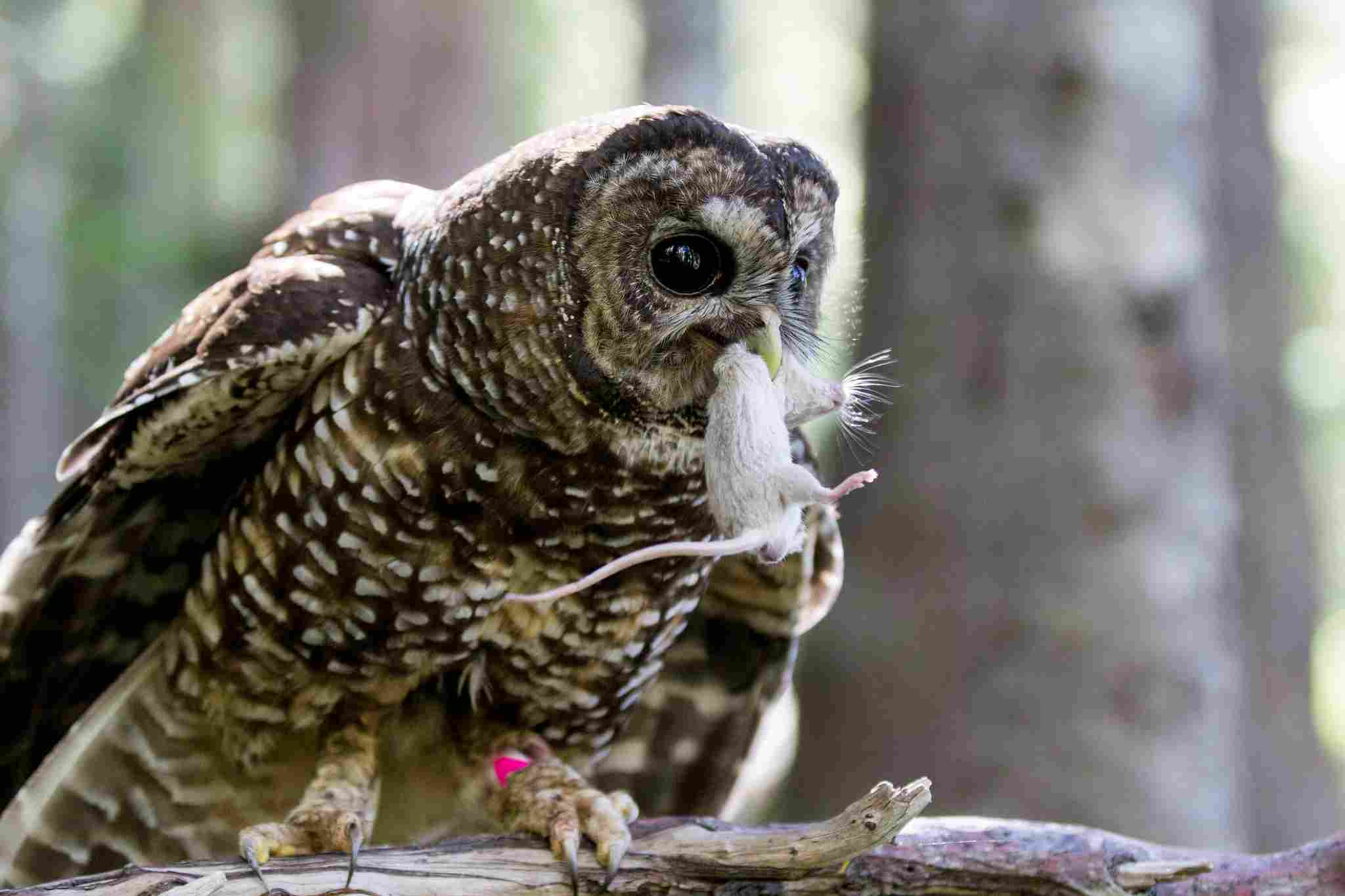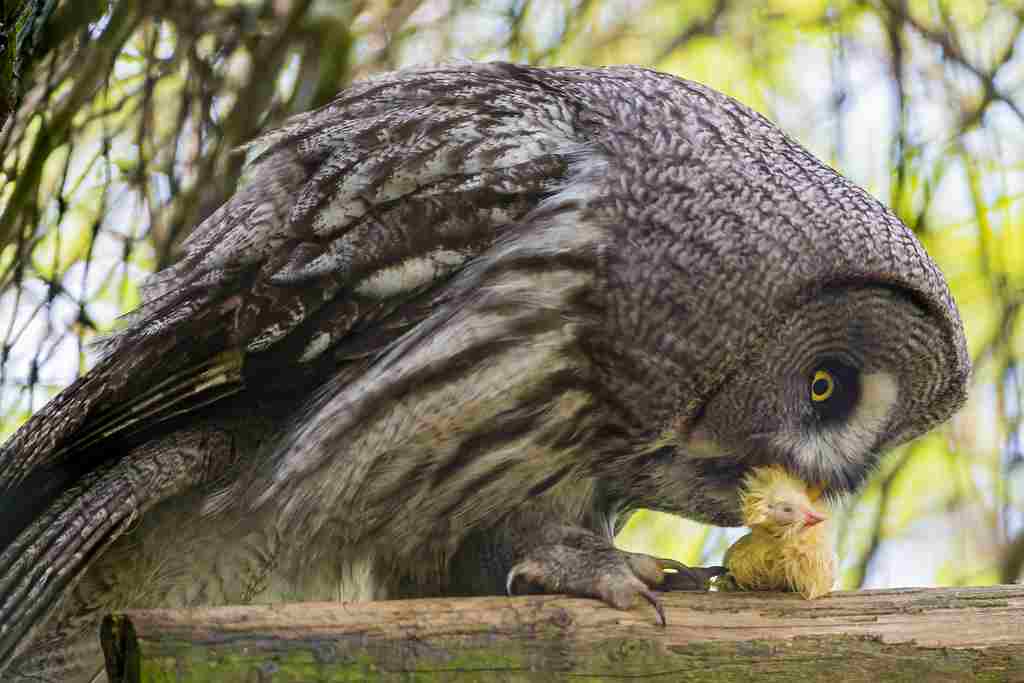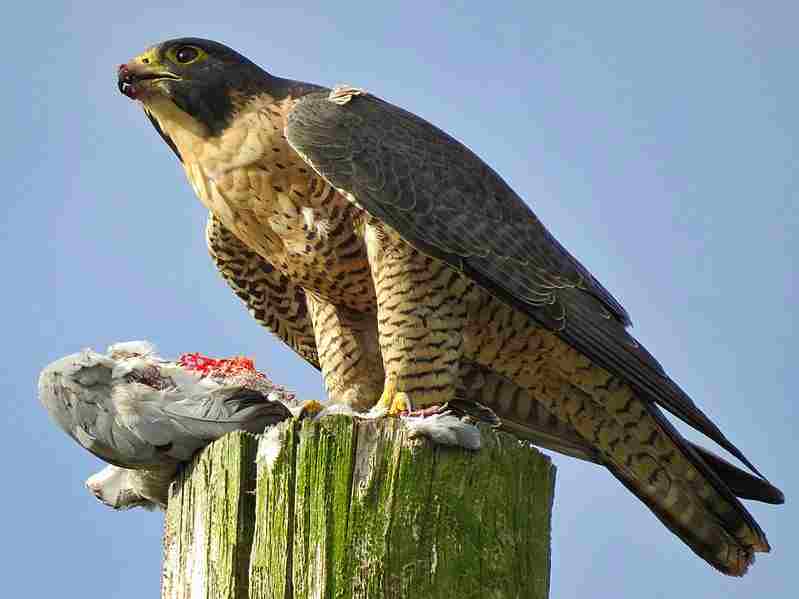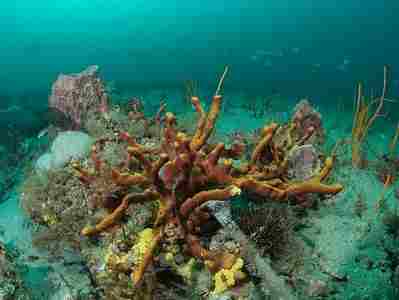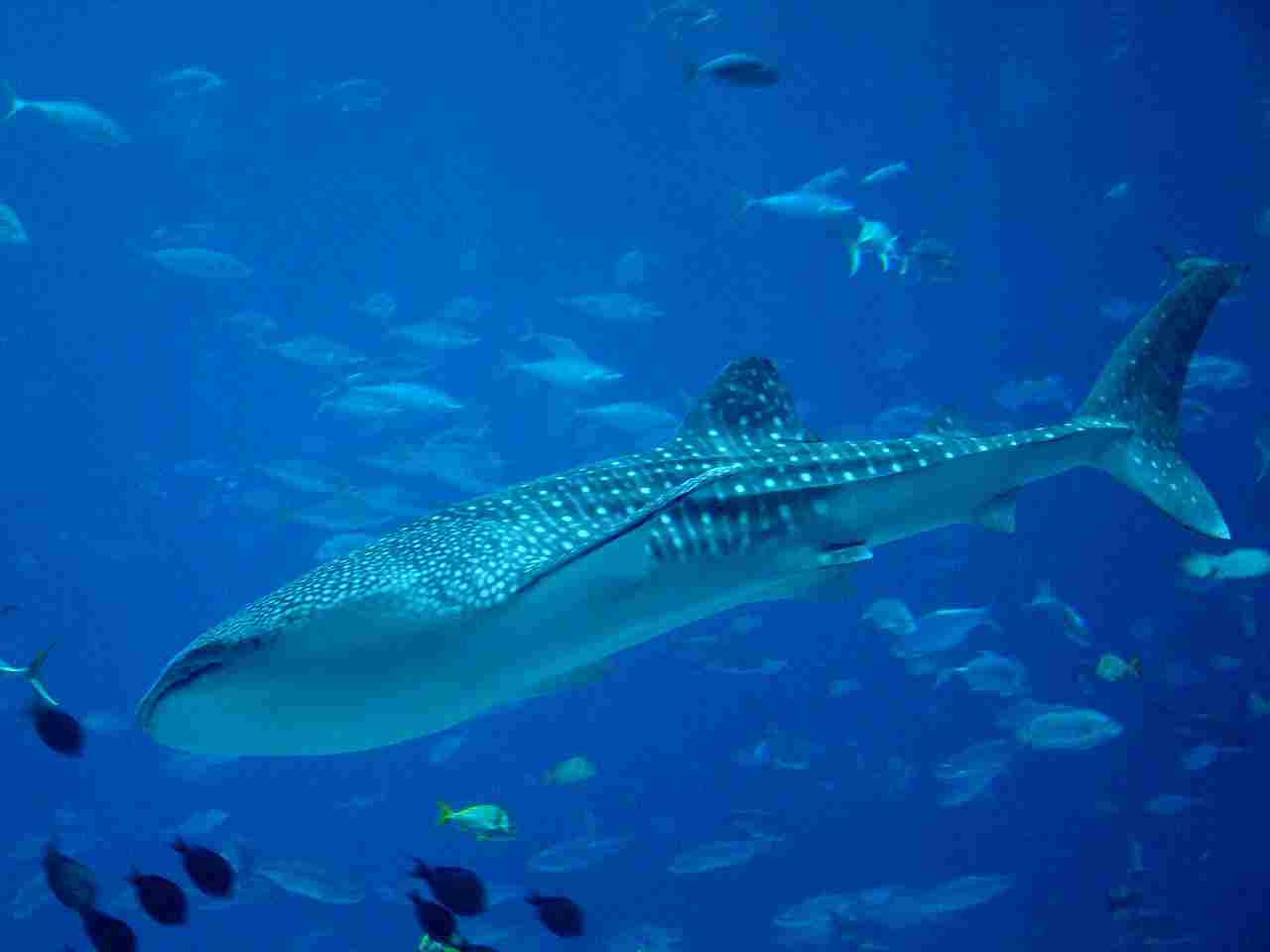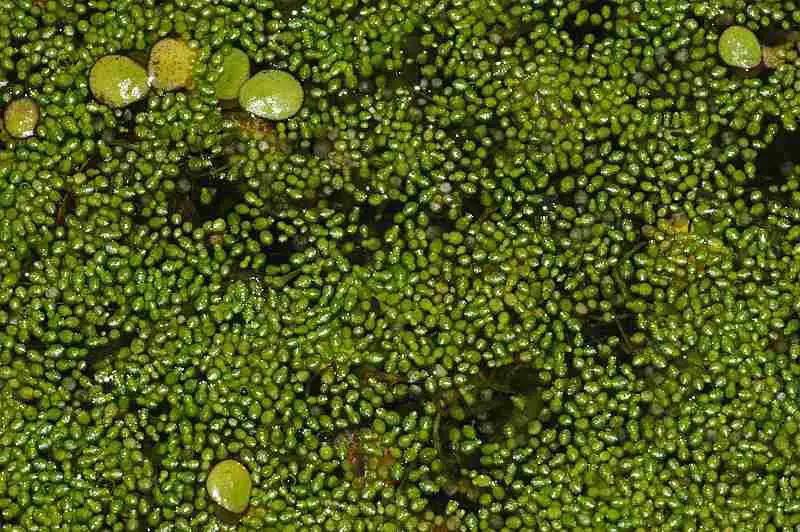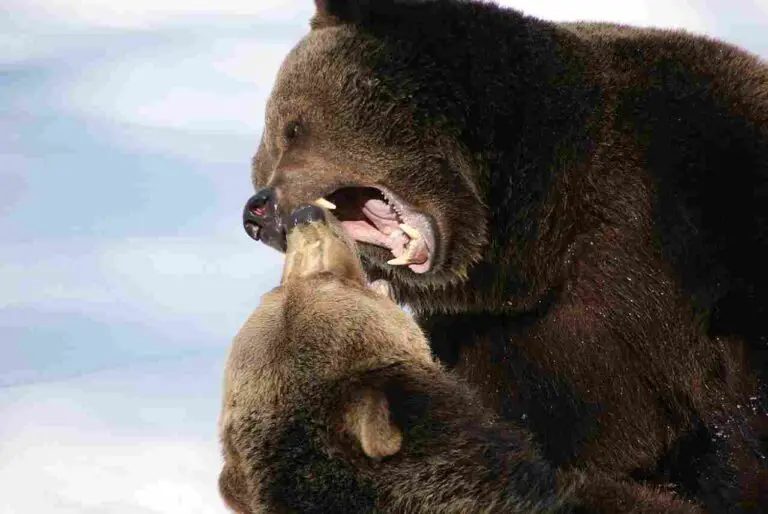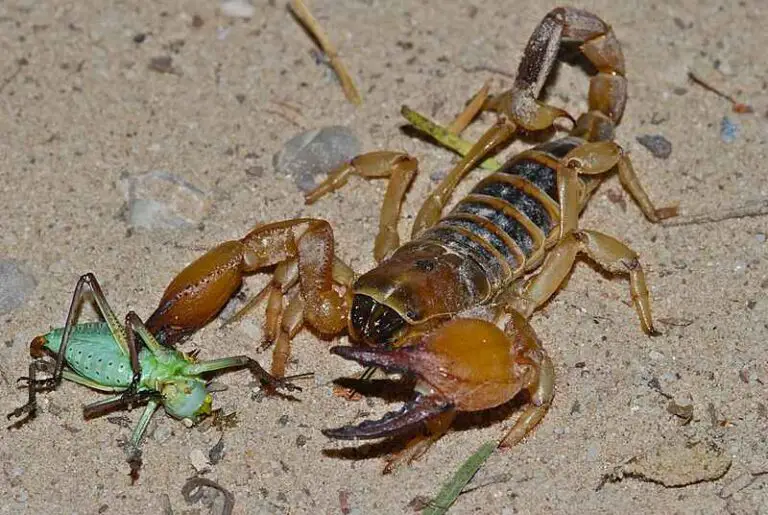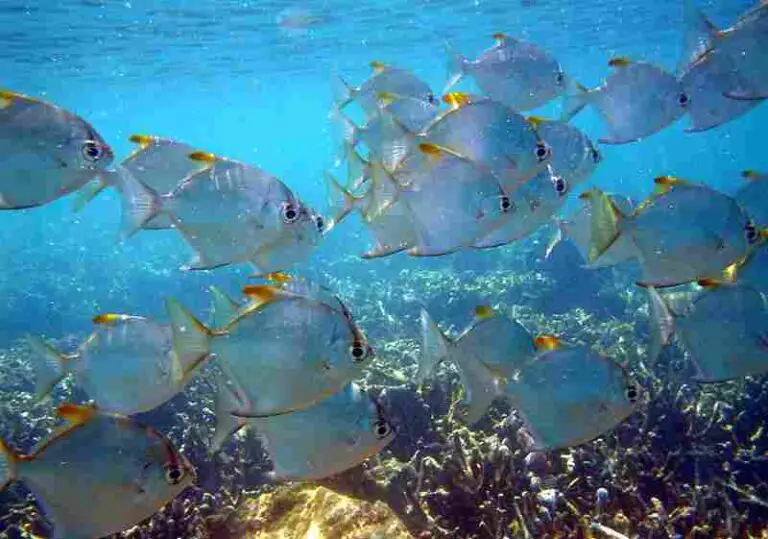Tundra Food Web Based on Trophic Links Between Food Chains
Tundra food web is made up of complex trophic interrelations between various organisms in linear chain sequences; like snowy owls as secondary consumers; as well as heath and sedges as producers, functioning in multiple food chains simultaneously.
This article discusses tundra food web based on trophic links between different tundra food chains, as follows;
1). Tundra Food Chain 1 (as a component of the Tundra Food Web)
The tundra food web is based on interconnections between organisms in various feeding sequences, at various trophic levels.
These feeding sequences can be simplistically represented using food chains, such as the one outlined below;
*Food Chain 1:
Producers (Trophic Level 1): Heath, grass, forbs
Primary Consumers (Trophic Level 2): Vole, slug, grouse
Secondary Consumers (Trophic Level 3): Arctic fox, snowy owl
Tertiary Consumers (Trophic Level 4): Polar bear, golden eagle
*Trophic Level 1: Producers
In this food chain, the producers are; heath, forbs and grass.
These plants capture and convert solar radiation to biomass and energy through the process of photosynthesis, thereby acting as primary food sources and carbon sinks [4].
Forbs and grass(es) are main groups of herbaceous plants, while heath is a shrub that is known to thrive in the tundra.
By converting visible light from the Sun to biomass, these plants play a key role of introducing essential resources (biomass, nutrients) into the ecosystem.
The table below summarizes producers in tundra-food chain 1 and their scientific names;
Tundra Producer/Plant | Scientific Name(s) |
Heath | Calluna vulgaris |
Grass(es) | Deschampsia cespitosa, Eriophorum vaginatum |
Forbs | Pedicularis spp., Saxifraga spp. |
*Trophic Level 2: Primary Consumers
In this chain (which is a component of the tundra food web, primary consumers are; vole, slug and grouse.
Vole is a small herbivorous rodent that feeds chiefly on plant matter, including forbs and monocotyledonous grasses [2].

The slug is a gastropod that occurs in shaded, relatively-humid areas of the tundra, and survives by grazing on foliage.
Grouses are birds that feed on tundra plants like grasses and heath (shrubs).
These primary producers are listed along with their scientific names in the table below;
Tundra Primary Consumer/Herbivore | Scientific Name(s) |
Vole | Microtus spp. |
Grouse | Lagopus lagopus |
Slug | Arion spp., Deroceras spp. |
*Trophic Level 3: Secondary Consumers
Secondary consumers in this food chain are the Arctic fox and snowy owl.
The Arctic fox (Vulpes lagopus) is a small carnivorous mammal, whose diet in the tundra is primarily composed of smaller mammals like voles, as well as carrion, birds, and eggs [1].

The snowy owl (Bubo scandiacus) is a bird of prey that consumes smaller birds, as well as small mammals like lemmings and voles.
Tundra Secondary Consumer | Scientific Name(s) |
Arctic Fox | Vulpes lagopus |
Snowy Owl | Bubo scandiacus |
*Trophic Level 4: Tertiary Consumers
The tertiary consumers in this food chain are; polar bear and golden eagle.
The polar bear (Ursus maritimus) functions as an apex predator within its territory which includes the Arctic tundra; where its food predominantly comprises of seals [5].
Other food sources for the polar bear include fish, and carrion.
The golden eagle (Aquila chrysaetos) is not a consistent inhabitant of tundras, but traverses the tundra for hunting among other purposes. Food for this raptor includes birds and small mammals like voles and Arctic hares.
Tundra Tertiary Consumer | Scientific Name(s) |
Polar Bear | Ursus maritimus |
Golden Eagle | Aquila chrysaetos |
2). Tundra Food Chain 2
The second tundra food chain in the food web is outlined below;
*Food Chain 2:
Producers (Trophic Level 1): Willow, forbs, sedges, grass
Primary Consumers (Trophic Level 2): Arctic hare, beetle, caribou
Secondary Consumers (Trophic Level 3): Rough-legged hawk, Arctic fox
Tertiary Consumers (Trophic Level 4): Golden eagle, Arctic wolf
*Trophic Level 1: Producers
The producers in this food chain are willows, forbs (herbaceous angiosperms), sedges (grass-like non-woody plants), and grasses.
As producers, these plants play the crucial role of capturing and transforming solar energy to chemical energy for organic usage. Willows are shrubs (some species of which can grow to the size of small trees) that occur in the tundra; while sedges, grasses and forbs are herbaceous forage for herbivores.
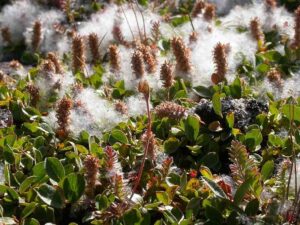
Tundra Producer/Plant | Scientific Name(s) |
Willow | Salix spp. |
Forbs | Pedicularis spp., Saxifraga spp. |
Sedges | Carex spp. |
Grasses | Deschampsia spp., Poa spp. |
*Trophic Level 2: Primary Consumers
The primary consumers in this food chain are the Arctic hare, beetle, and caribou.
Arctic hare (Lepus arcticus) is a herbivorous rodent that feeds mainly on plant matter, such as grasses, forbs and willows.
Beetles in the tundra include a handful of resilient species like Chlaenius spp., that have herbivorous and detrivorous feeding habits so that they are able to consume foliage, and remains of dead plants, thereby facilitating biodegradation and recycling of nutrients.
Caribou or reindeer (Rangifer tarandus) is a large herbivorous mammal that feeds on mosses, willows, sedges and lichens [6].
Tundra Primary Consumer | Scientific Name(s) |
Arctic Hare | Lepus arcticus |
Beetles | Pterostichus spp., Chlaenius spp. |
Caribou | Rangifer tarandus |
*Trophic Level 3: Secondary Consumers
The secondary consumers in this food chain are the rough-legged hawk and Arctic fox.
Rough-legged hawk (Buteo lagopus) is a raptor whose food sources in the tundra include rodents like Arctic hares, as well as smaller birds.
The Arctic fox (Vulpes lagopus) is an omnivorous small mammal that survives in the tundra by means of its drought-tolerance, thick insulating fur, and versatile opportunistic feeding habits.
Food for the Arctic fox includes; birds, bird-eggs, small mammals, as well as carrion and remains from prey of other consumers.
Tundra Secondary Consumer | Scientific Name(s) |
Rough-legged Hawk | Buteo lagopus |
Arctic Fox | Vulpes lagopus |
*Trophic Level 4: Tertiary Consumers
The tertiary consumers in this food chain are the golden eagle and Arctic wolf.
Golden eagle (Aquila chrysaetos) is a large and powerful raptor that is known to prey on tundra animals like small mammals (including Arctic fox [3]) and birds, and can also feed on carrion.
The Arctic wolf (Canis lupus arctos) is a top predator in the tundra and primarily feeds on caribou, muskoxen, and other small mammals.
Below are the tertiary consumers of Food Chain 2 and their scientific names;
Tundra Tertiary Consumer | Scientific Name(s) |
Golden Eagle | Aquila chrysaetos |
Arctic Wolf | Canis lupus arctos |
Recurring Organisms that Link Out to Form the Tundra Food Web
The Arctic fox appears as a secondary consumer in both Food Chain 1 and Food Chain 2.
This is indicative of the adaptive nature of this animal as an opportunistic feeder, and also signifies a link between chains 1 and 2.
Such links represent trophic relationships, where the organisms involved are simultaneously contributing to energy-transfer in multiple chains.
The simultaneous, multiple trophic relationships between organisms and food chains show how complex the feeding trends and biogeochemical cycles in a tundra (or any ecosystem) are in real life scenarios. It is these relationships that build-out to form the complex ecologic models called tundra food webs.
3). Tundra Food Chain 3 (as a component of the Tundra Food Web)
*Food Chain 3:
Producers (Trophic Level 1): Dwarf birch, heath, moss, sedges
Primary Consumers (Trophic Level 2): Lemming, moth, muskox
Secondary Consumers (Trophic Level 3): Wolverine, snowy owl
Tertiary Consumers (Trophic Level 4): Polar bear, Arctic wolf
*Trophic Level 1: Producers
The producers in this food chain are the dwarf birch (Betula nana), heath (Empetrum nigrum), mosses, and sedges.
Survival for these plants is a result of long-term evolution and adaptation to the harsh tundra climate and infertile soil. They contribute to the food chain as producers of chemical energy from sunlight, through photosynthesis.
Heath and dwarf birch are shrubs, sedges are herbaceous plants, while mosses are non-vascular, low-growing plants that form extensive vegetative ground-covers in the tundra.
Tundra Producer/Plants | Scientific Name(s) |
Dwarf Birch | Betula nana |
Heath | Erica tetralix |
Mosses | Polytrichum spp., Sphagnum spp. |
Sedges | Carex spp. |
*Trophic Level 2: Primary Consumers
Primary consumers in this food chain are the lemming, moth, and muskox.
Lemmings (Lemmus spp.) are small herbivorous rodents that feed on plant matter, including dwarf birch, heath, mosses, and sedges.
Moths, especially in their caterpillar stage, feed on plant leaves.
Muskoxen (Ovibos moschatus) are large herbivorous mammals that feed as grazers, on tundra vegetation, including sedges and grasses.
Tundra Primary Consumers | Scientific Name(s) |
Lemming | Lemmus spp. |
Moths | Agrotis spp., Euxoa spp. |
Muskox | Ovibos moschatus |
*Trophic Level 3: Secondary Consumers
The secondary consumers in this food chain are the wolverine and snowy owl.
Wolverines (Gulo gulo) are medium-sized carnivorous mammals that feed on a various prey, including rodents like lemmings, and carrion.
Snowy owls (Bubo scandiacus) are birds of prey that feed primarily on small mammals, like lemmings and voles, and may also prey on other birds.
Tundra Secondary Consumers | Scientific Name(s) |
Wolverine | Gulo gulo |
Snowy Owl | Bubo scandiacus |
*Trophic Level 4: Tertiary Consumers
The tertiary consumers in this food chain are the polar bear and Arctic wolf.
Polar bears (Ursus maritimus) function as apex predators in the tundra, as evident in their trophic position in this food chain.

Arctic wolves (Canis lupus arctos) are usually tertiary consumers within their territory.
Food for these canids includes both large and small herbivores like; muskoxen, Arctic hares, and other small mammals.
Tundra Tertiary Consumers | Scientific Name(s) |
Polar Bear | Ursus maritimus |
Arctic Wolf | Canis lupus arctos |
Recurring Organisms that Link Out to Form the Tundra Food Web
The snowy owl appears as a secondary consumer in both Food Chain 1 and Food Chain 3.
In each of these food chains, it contributes to energy transfer, and acts as a focal point for trophic interconnections that form the foundation of the food web.
Heath appears as a producer in both chains 1 and 3; while sedges are in both chains 2 and 3.
Conclusion: The Tundra Food Web as A Complex Network of Trophic Interconnections
The tundra food web is built upon complex links between tundra animals and plants, where individuals serve as predators and/or food sources to multiple other organisms.
Examples of trophic interrelationships that form the foundation of the food web, as observed from the three food chains in this article are;
1. Snowy owl as a secondary consumer in both Food Chain 1 and Food Chain 3
2. Heath as a producer in chains 1 and 3
3. Sedges as producers in chains 2 and 3
4. Arctic fox as a secondary consumer in chains 1 and 2
Some organisms can function in more than one trophic level as well.
The wolverine, for example; can be classified as a secondary consumer in tundra regions where polar bears are dominant; and a tertiary consumer where polar bears are less represented. This is due to the biological advantages of size and strength that place polar bears above smaller predators like the wolverine.
A summary of the three food chains discussed in this article is given below;
*Food Chain 1: Heath, grass, forbs (Trophic Level 1)→vole, slug, grouse (Trophic Level 2)→Arctic fox, snowy owl (Trophic Level 3)→polar bear, golden eagle (Trophic Level 4)
*Food Chain 2: Willow, forbs, sedges, grass (Trophic Level 1)→Arctic hare, beetle, caribou (Trophic Level 2)→rough-legged hawk, Arctic fox (Trophic Level 3)→golden eagle, Arctic wolf (Trophic Level 4)
*Food Chain 3: Dwarf birch, heath, moss, sedges (Trophic Level 1)→lemming, moth, muskox (Trophic Level 2)→wolverine, snowy owl (Trophic Level 3)→polar bear, Arctic wolf (Trophic Level 4)
References
1). Chesemore, D. L. (2011). "Notes on the food habits of Arctic foxes in northern Alaska." Canadian Journal of Zoology 46(6):1127-1130. Available at: https://doi.org/10.1139/z68-161. (Accessed 14 June 2023).
2). Hansson, L.; Larsson, T.-B. (2006). "Vole Diet on Experimentally Managed Afforestation Areas in Northern Sweden." Ecography 1(1):16 - 26. Available at: https://doi.org/10.1111/j.1600-0587.1978.tb00934.x. (Accessed 14 June 2023).
3). Jackson, C. R.; Rød-Eriksen, L.; Mattisson, J.; Flagstad, Ø.; Landa, A.; Miller, A. L.; Eide, N. E.; Ulvund, K. (2023). "Predation of endangered Arctic foxes by Golden eagles: What do we know?" Wiley, Ecology and Evolution 13(3). Available at: https://doi.org/10.1002/ece3.9864. (Accessed 14 June 2023).
4). Min, E.; Wilcots, M. E.; Naeem, S.; Gough, L.; McLaren, J. R.; Rowe, R. J.; Rastetter, E. B.; Boelman, N. T.; Griffin, K. L. (2021). "Herbivore absence can shift dry heath tundra from carbon source to sink during peak growing season." IOP Publishing, Environmental Research Letters 16(2). Available at: https://doi.org/10.1088/1748-9326/abd3d0. (Accessed 14 June 2023).
5). Thiemann, G. W.; Iverson, S.J.; Stirling, I. (2008). "Polar bear diets and arctic marine food webs: Insights from fatty acid analysis." Ecological Monographs 78(4):591-613. Available at: https://doi.org/10.1890/07-1050.1. (Accessed 14 June 2023).
6). Webber, Q.; Ferraro, K.; Hendrix, J. G.; Wal, E. V. (2022). "What do caribou eat? A review of the literature on caribou diet." Canadian Journal of Zoology 100(ja). Available at: https://doi.org/10.1139/cjz-2021-0162. (Accessed 14 June 2023).

